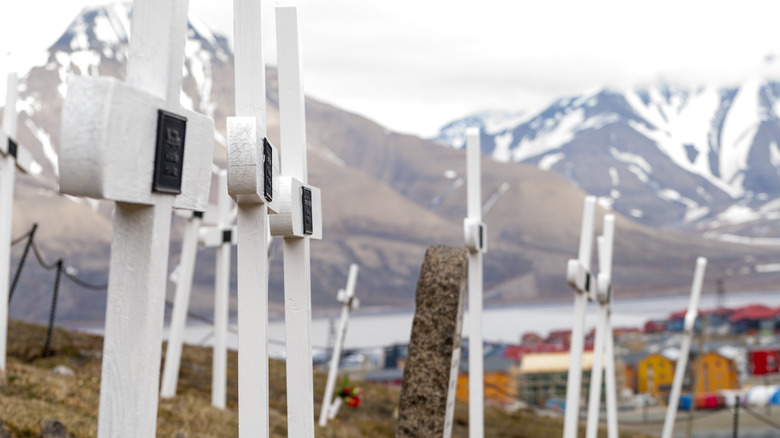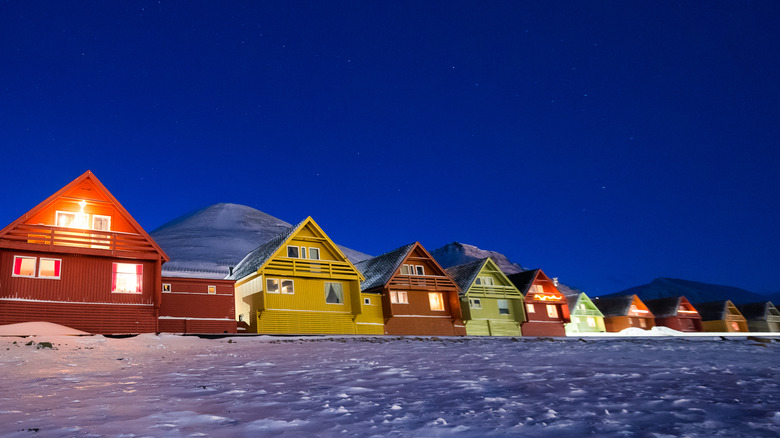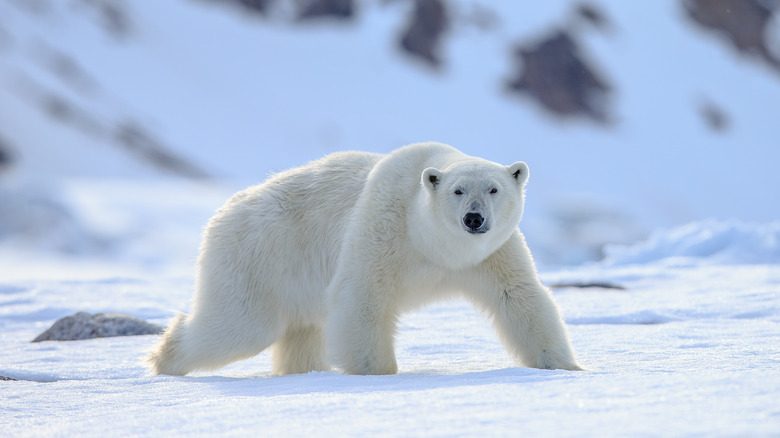Here's Why This Town Forbids The Burials Of Bodies
As strange as it might sound, there are laws around the world prohibiting people from dying or being buried in certain places. This is usually connected to practical reasons such as lack of space, but it's sometimes a little more complicated than that.
For example, you cannot be buried on the Japanese island of Itsukushima to preserve the purity of the holy shrines on the island. Until the 19th century, it was actually illegal to die there. While the law is no longer in effect, there are still no cemeteries on the island, so the elderly and terminally ill residents are encouraged to leave for the mainland to avoid polluting the island with death (via Daily Mail). Then there are towns in Europe — including Sarpourenx, France, and Lanjaron, Spain — where you cannot legally die because the local cemeteries have reached their capacity limits.
Then there are places where it's technically legal to be buried, but you cannot anyway. Oymyakon, Russia, is one of them. Located just a few hundred miles from the Arctic Circle, the coldest town on Earth has just 500 residents, no sunlight for up to 21 hours in winter, and average temperatures of -58 degrees Fahrenheit. The problem with burying the dead in a place like this? The ground is always frozen. So when somebody dies, family members can get in a car and drive to the nearest city, over 500 miles away, with the body. Or they can spend several days lighting fires to melt the ground, so they can dig a grave, according to Wired.
The unique situation of Longyearbyen, Norway
Longyearbyen is a Norwegian town of about 2,000 residents in the Svalbard archipelago. That might sound tiny, but the entire island of Svalbard only has about 3,000 residents, so Longyearbyen is the happening place in the area. Life in Longyearbyen can be beautiful (Northern Lights are almost guaranteed), but it's also harsh, with round-the-clock darkness in the winter and average temperatures as low as 7 degrees Fahrenheit, according to Insider.
There's a small hospital in town, but both being born and dying in Longyearbyen is highly discouraged as a matter of policy, according to Norway Today. In fact, this policy applies to Svalbard in general. People who are gravely ill should fly to mainland Norway for treatment and ... well, just in case the treatment doesn't work. If you do happen to die in town, it's possible to be cremated and the ashes buried, but this requires a license and lots of paperwork that could take months.
Not dying in Longyearbyen can sometimes be tricky, as about 1,000 polar bears call the island home — in case you weren't paying attention, that's about one polar bear for every two people. Although gun ownership is restricted in Norway, this isn't the case in Svalbard — here, you are encouraged to carry at least a flare gun but preferably a rifle every time you leave town (via Sysselmannen).
In Longyearbyen, burials are banned to prevent the apocalypse
Up until the mid-20th century, Longyearbyen had a cemetery. But one of the issues with living in a super cold place is that buried bodies don't decompose. Instead, they remain well-preserved in a sort of ice casket for, potentially, thousands of years. So back in the 1950s, a law was passed to ban further burials on the island for fear of spreading disease.
In 1998, scientists from London confirmed the fear was real when they unearthed the bodies of seven men buried in the ice 80 years prior. All had died after contracting the Spanish flu in the big pandemic of 1918 — and scientists were able to obtain live samples of the virus from all the bodies, confirming that deadly diseases remain alive when bodies are preserved in permafrost (via The New York Times).
This would still be relatively fine as long as the bodies (and deadly diseases inside them) remain frozen, but climate change is starting to take a heavy toll on Longyearbyen. While summer temperatures there used to stay under 50 degrees Fahrenheit, they reached 71 degrees Fahrenheit in 2020 — the hottest recorded day ever in the archipelago. According to a report by Scientific American, the town is heating up fast, the permafrost is now warmer than it's ever been, and graves are starting to become exposed.
If the permafrost thaws, the island (and eventually the world) could potentially be exposed to dormant viruses that start a very deadly, unstoppable pandemic.


